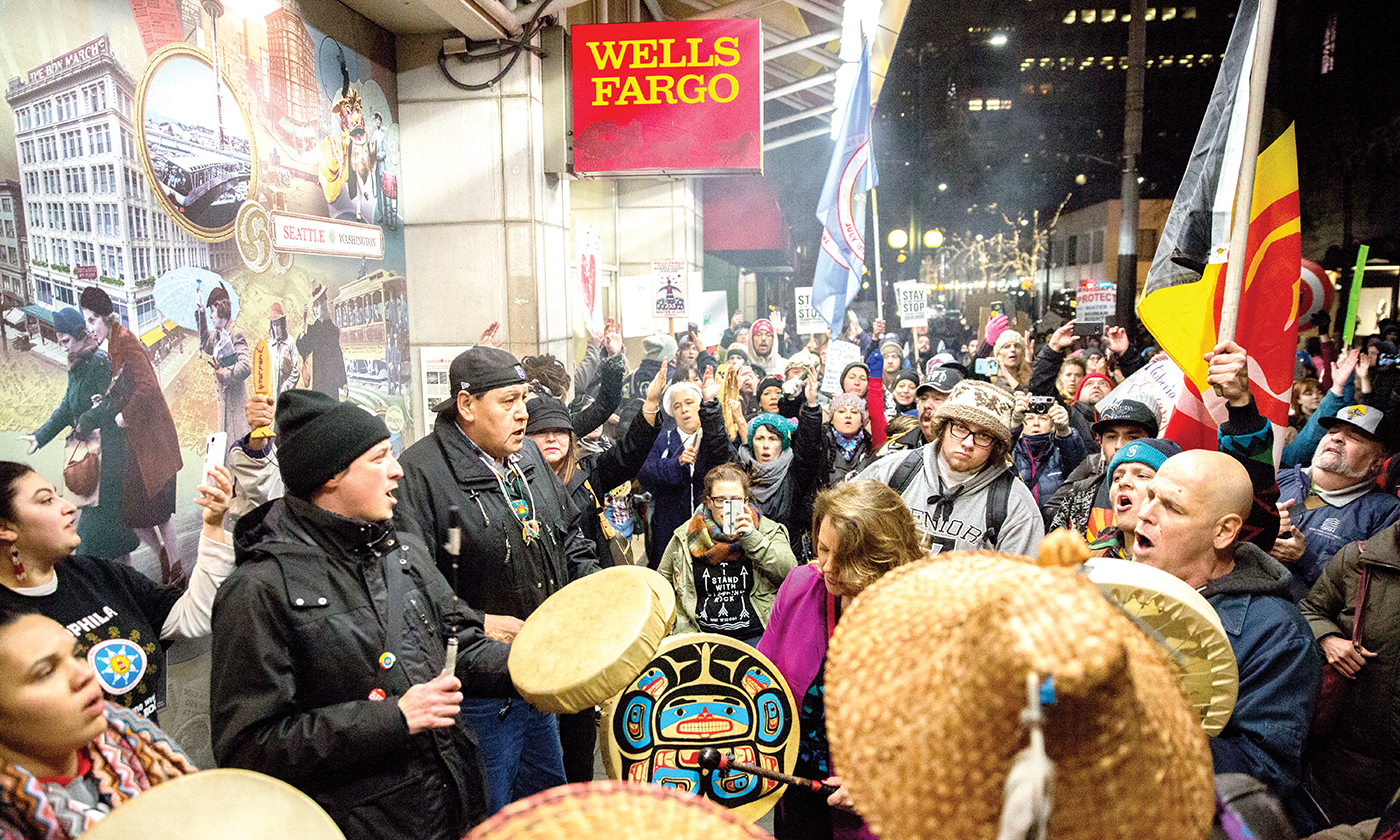
In celebration of Native American Heritage Month, we are hosting a series of profiles and stories to amplify and honor people, businesses, organizations, stories, and projects connected to Seattle’s Indigenous community.
By Wakíƞyaƞ Waánataƞ (Matt Remle)
“There is resistance: in Canada, it’s coming from First Nations. But it’s worth remembering that that’s a worldwide phenomenon. Throughout the world, the indigenous populations are in the lead. They are actually taking the lead in trying to protect the earth…. It’s pretty ironic that the so-called ‘least advanced’ people are the ones taking the lead in trying to protect all of us, while the richest and most powerful among us are the ones who are trying to drive the society to destruction.” ~ Noam Chomsky
Settler colonization
Starting in 1452, under the guise of the Papal Bull Romanus Pontifex and later the 1493 Papal Bull Inter Cetera, the Christian Doctrine of Discovery, European Christians began their efforts to expand colonial rule, and the Christian Empire, throughout the world.
These Papal Bulls sanctioned European Christian Nations to “capture, vanquish, and subdue the Saracens, pagans, and other enemies of Christ, to put them into perpetual slavery, and to take all their possessions and property” and were authorized “to take possession of any lands discovered that were not under the dominion of any Christian rulers.”
Early colonial efforts centered on the western coast of Africa as Portugal “claimed” lands and engaged in the trafficking of African slaves. Spain was quick to follow suit in efforts to “claim” the lands that Columbus had “discovered.” Other European Christian Nations were to later engage in efforts to claim lands, resources, and slaves from the Caribbean Islands to throughout what is now called North, Central, and South America extending out to the Pacific Islands.
From the onset, Indigenous communities have actively resisted colonial efforts. On Columbus’s return voyage to Spain to both report his findings and gather men and materials needed for colonization efforts, he had left about 35 men who were subsequently wiped out by Taino warriors. Resistance to colonization had begun.
Similar scenes of European colonization efforts were repeated with similar responses of Indigenous resistance over the next several hundred years.
The goals of settler-colonial state have always been the same, remove Indigenous populations whether through extermination, relocation or assimilation, appropriate lands and resources and expand the reaches of the settler state.
Genocide

In its wake, 500 years of colonization and European expansionism has brought unparalleled loss of life through mass campaigns of genocide and enslavement, as well as, mass extinction of our other non-human relatives. Unci Maka, Grandmother Earth, has borne the brunt of this mass desecration and devastation with the loss of forests, and pollution of waters and lands.
While Indigenous communities have suffered the greatest impacts of colonization, the environmental impacts can now be felt by all communities. We are living in a time when our first medicine, Mni (water), is both being polluted to the point where no species can drink it and being overused to where underground aquifers are drying up.
Long before scientists warned of the impacts of burning fossil fuels, Tribal communities spoke out against, and at times engaged in mass protests, sometimes armed conflict, over the abuses being inflicted upon our shared earth.
“The earth does not belong to man, man belongs to the earth. All things are connected like the blood that unites us all. Man did not weave the web of life, he is merely a strand in it. Whatever he does to the web, he does to himself.” – Chief Sealth (Duwamish)
Despite colonial efforts to exterminate, terminate, relocate, and assimilate Indigenous populations, Native communities continue to resist efforts to both desecrate Unci Maka and strip Native peoples of their languages, spirituality, and communities.
500-Years of Resistance

From the Mayan Zapatista’s resistance against Neo-liberalism to 1st Nations and Tribal uprisings against tar sands and hydraulic fracturing pipelines and other intensive fossil fuel, mining, and earth-destroying projects, Indigenous peoples continue to resist the efforts of the colonial settler state.
According to a 2021 report by the Indigenous Environmental Network and Oil Chance International, Indigenous resistance in the United States and Canada has prevented the emissions of 1.587 billion metric tons CO2. That sum totals 24% of annual emissions from the two countries.
Indigenous resistance movements from Standing Rock and the upper mid-west to Tribal Nations in the Northwest and North into Canada, Native peoples are engaged in efforts to not only protect their lands, waters, treaty rights, but the wellbeing of all nations and creation.
Whether non-Indigenous peoples realize it, or not, these acts of resistance benefit you, your children, and your generations to come in that the battles being waged are for life itself. All beings need clean water to drink, clean air to breathe, and non-polluted foods to eat.
Original Instruction
“Treat the earth well: it was not given to you by your parents, it was loaned to you by your children. We do not inherit the Earth from our Ancestors; we borrow it from our Children.” – Tasunke Witko (Crazy Horse) Lakota
All beings were given original instructions, instructions in how to live as a relative with all relations, how to live for the continuance of life itself. Daily, our other relatives, those seen and unseen, continue to fulfill their roles and responsibilities for life to exist. With the exception of some Indigenous communities, most “humans” have strayed from our roles and responsibilities. Because of that, it is no surprise we find ourselves in such a state of unbalance.
Mitakuyepi, my relatives, continue to relearn your traditional languages, go to ceremony, strengthen your relationships with your relatives and stand for Unci Maka and the generations yet to come.



